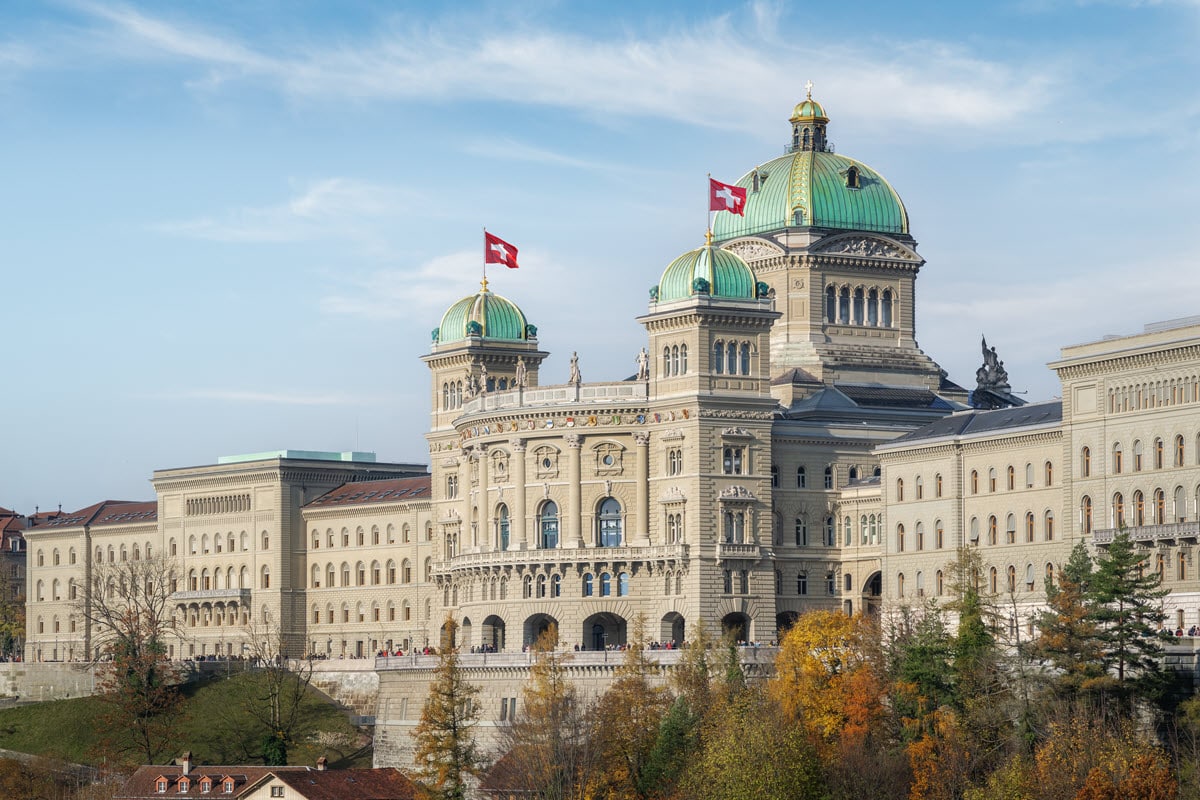Switzerland is a landlocked country located at the heart of Western, Central, and Southern Europe. It covers an area of 41,285 km2 (15,940 sq mi) and can be divided into three distinct geographical regions. The Alps cover about 58% of the country, the Central Plateau about 31%, and the Jura 11%. The country’s population of 8.5 million is primarily concentrated in the Central Plateau region.
Switzerland is known for its breathtaking nature, alpine scenery, and the Alps mountain range. It’s a top ski destination in winter and a hiking wonderland in summer. The country is also known for its beautiful lakes, decadent chocolate, neutral political position, and producing the world’s best watches.
Geneva
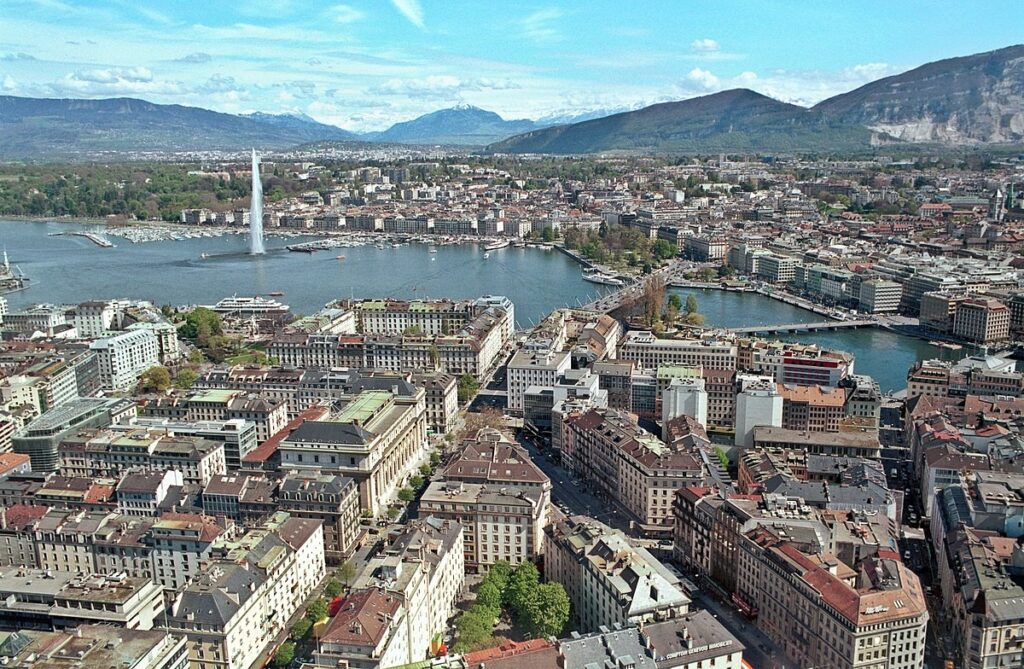
Next to being a stunning city, Geneva is known for its vibrant, cosmopolitan culture and international stature. This is no surprise, given that Geneva is home to the International Red Cross Committee and the European headquarters of the United Nations, as well as numerous other international organizations.
Some of the attractions you want to keep a lookout for include the Jet d’Eau, a massive fountain that spews water high into the air. In the Old Town, the Cathédrale St-Pierre is well-worth a stop.
Lake Geneva
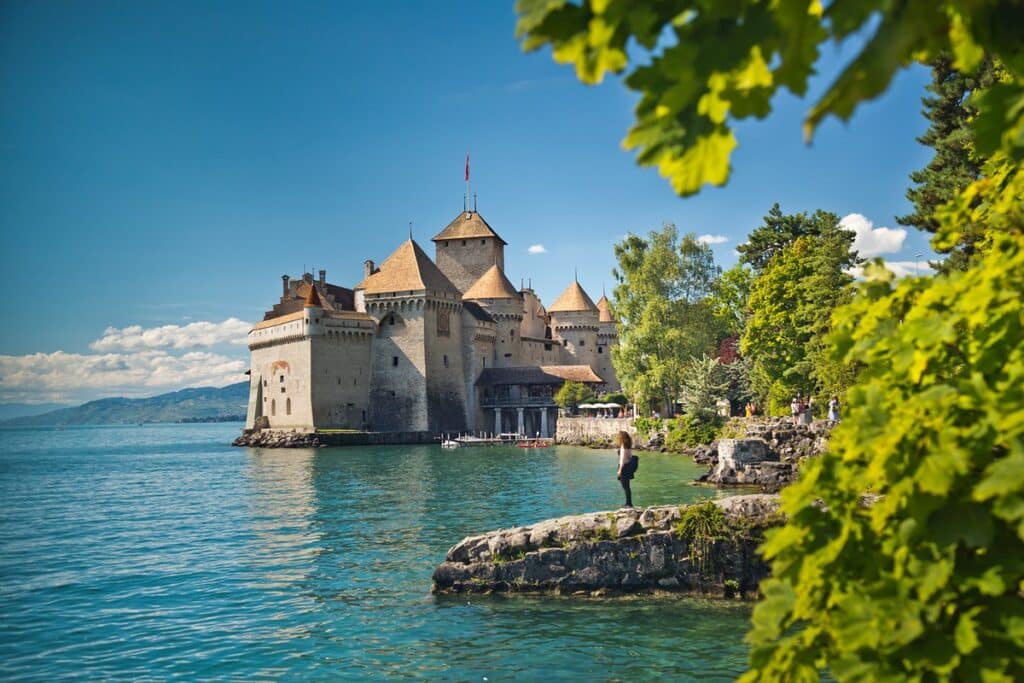
Lake Geneva is one of Western Europe’s largest lakes and is a hub of activity during the summer. Locals love to do all kinds of water sports in summer. The lake stretches from the town of Montreux on the east to Geneva on the lake’s western shores.
The views of the lake are something that every visitor to the country should experience at least once.
Interlaken
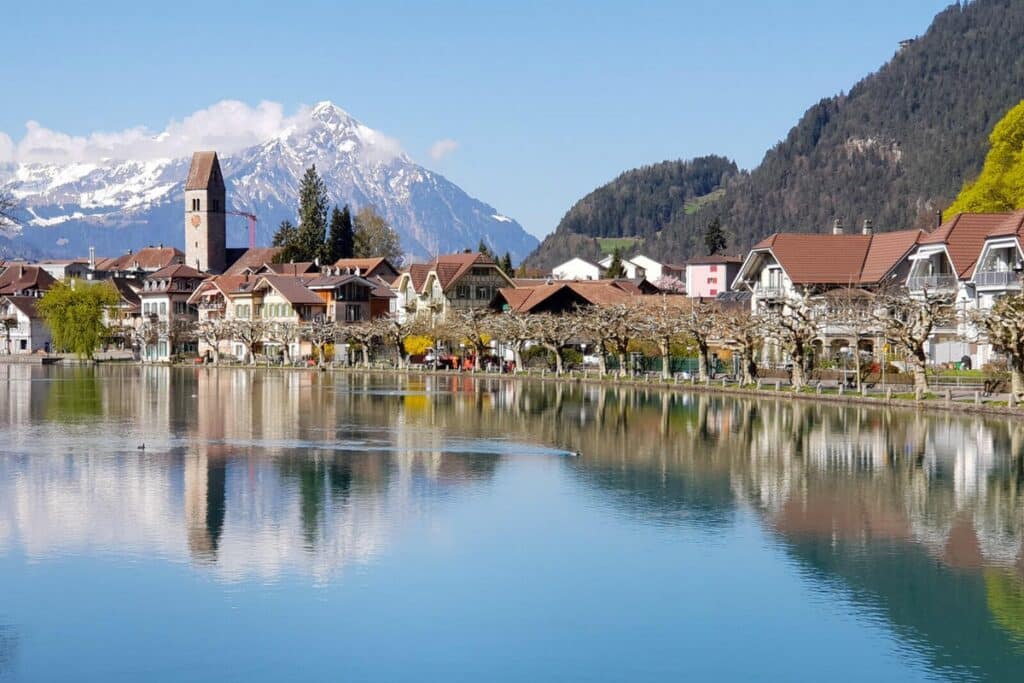
Tourists were visiting Interlaken as far back as the 1800s to breathe in the fresh air and enjoy the tranquility that you experience once you’re there. Interlaken is situated between two major lakes: Brienz and Thun. Thanks to its excellent location, there are also ample opportunities to go boating, swimming, or even biking around the lakes.
Next to being a popular spa destination, the city is ideally located as a basecamp for visits to the surrounding area in the Bernese Oberland Alps.
Lucerne
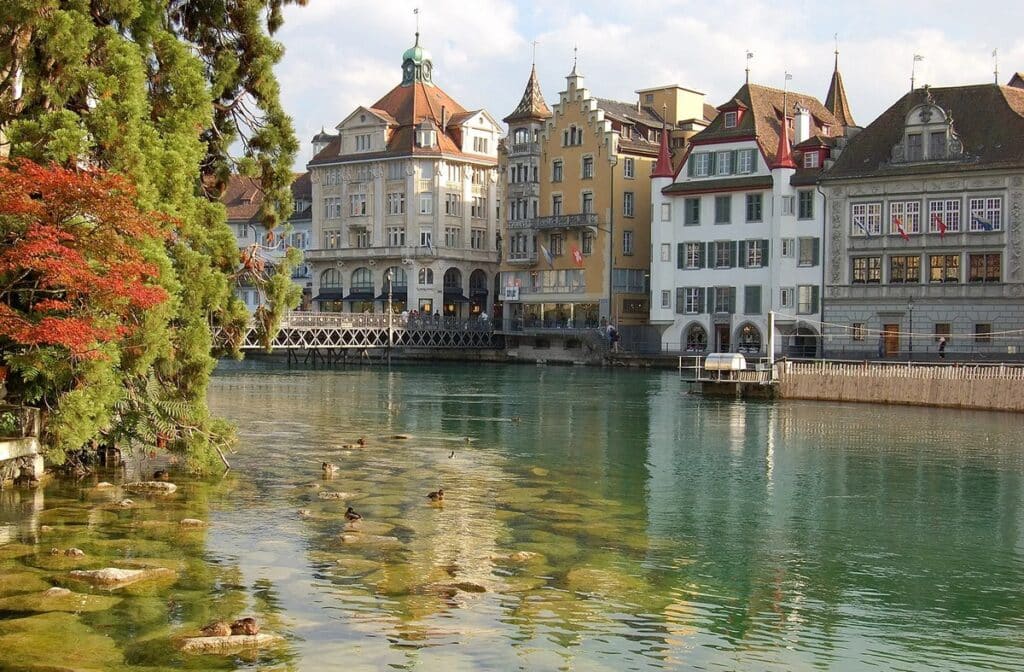
Lucerne (Luzern in German) is a firm favorite of visitors to Switzerland. It’s a beautiful city that’s easily explored on foot thanks to its car-free medieval old town and waterfront promenades.
The town’s most well-known landmarks include the Chapel Bridge, which dates from the 14th century, and the Lion monument. The latter is a moving sculpture of a dying lion that symbolizes the heroic deaths of Swiss Guards in 1792 during the French Revolution.
Lugano
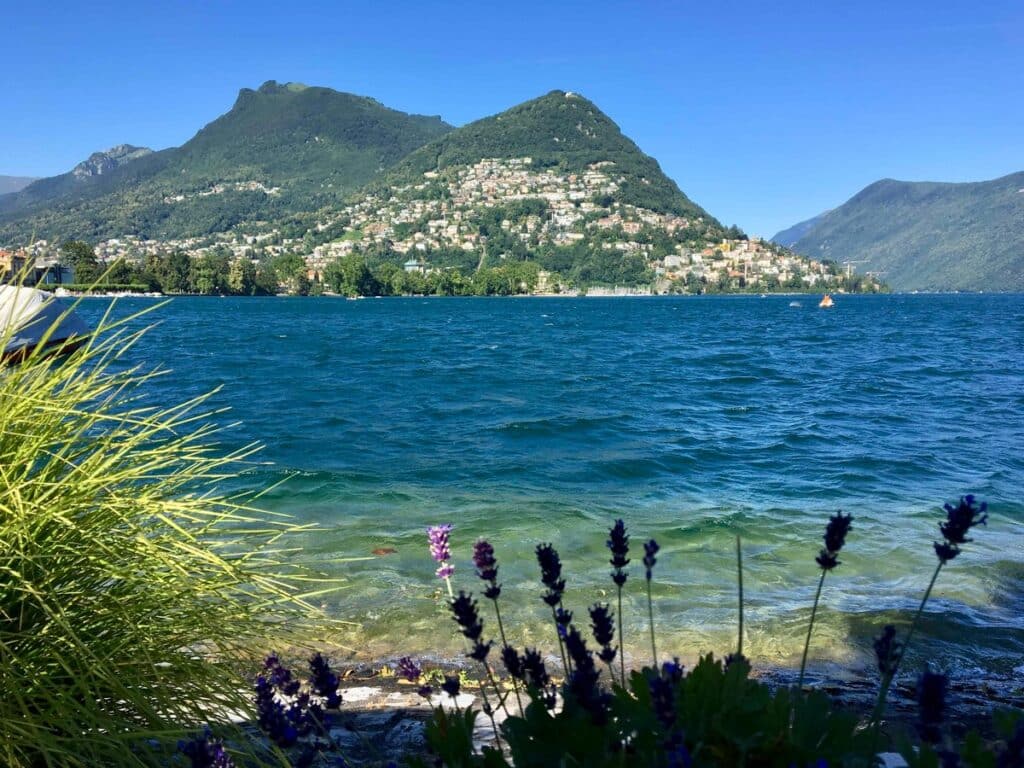
Lugano is the city in Switzerland where you are most likely to spot an A-list star. The city dates back to the 9th century and is located in the Italian-speaking part of the country.
It’s a hub of outdoor activities, and visitors usually opt to hike the Olive Tree Trail or swim at the Lido di Lugano. Lugano doesn’t only offer natural beauty; it also has a beautiful Old Town that shouldn’t skip.
Lausanne
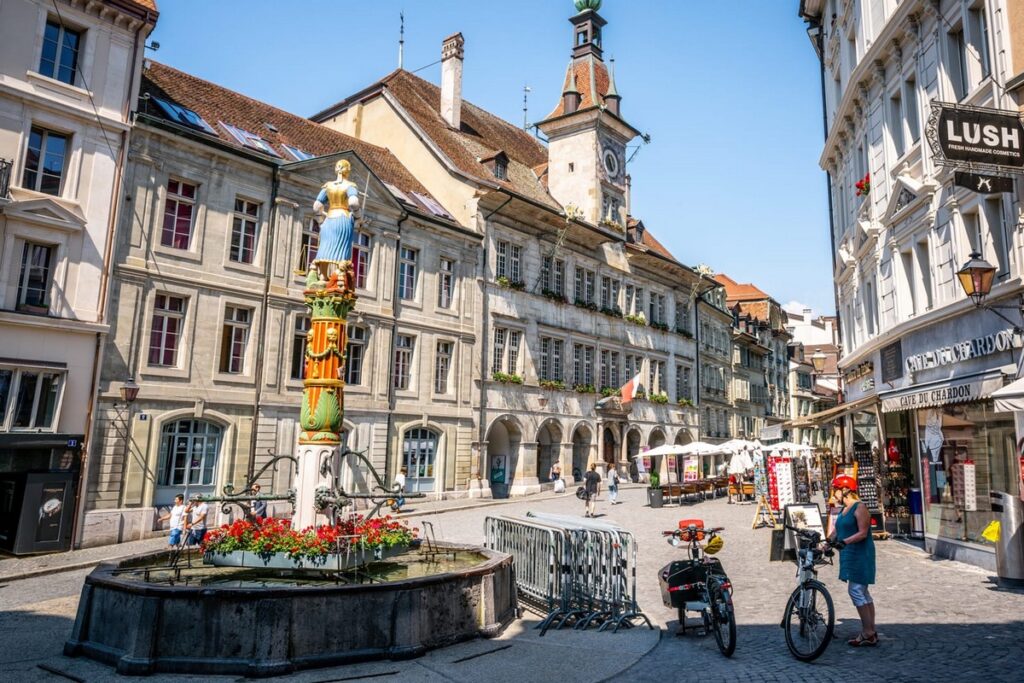
Lausanne serves as the gateway to one of the country’s largest ski areas as well as being home to two universities, so it has a lively atmosphere on top of the beautiful views.
When visiting the city, head to the Cité district. This is the area that used to be known as the Old Town. It’s the best way to get a feel for the town’s beautiful architecture. Don’t miss out on seeing the Palais de Rumine. This building houses 5 different museums guaranteed to keep you entertained for an entire day.
Zurich
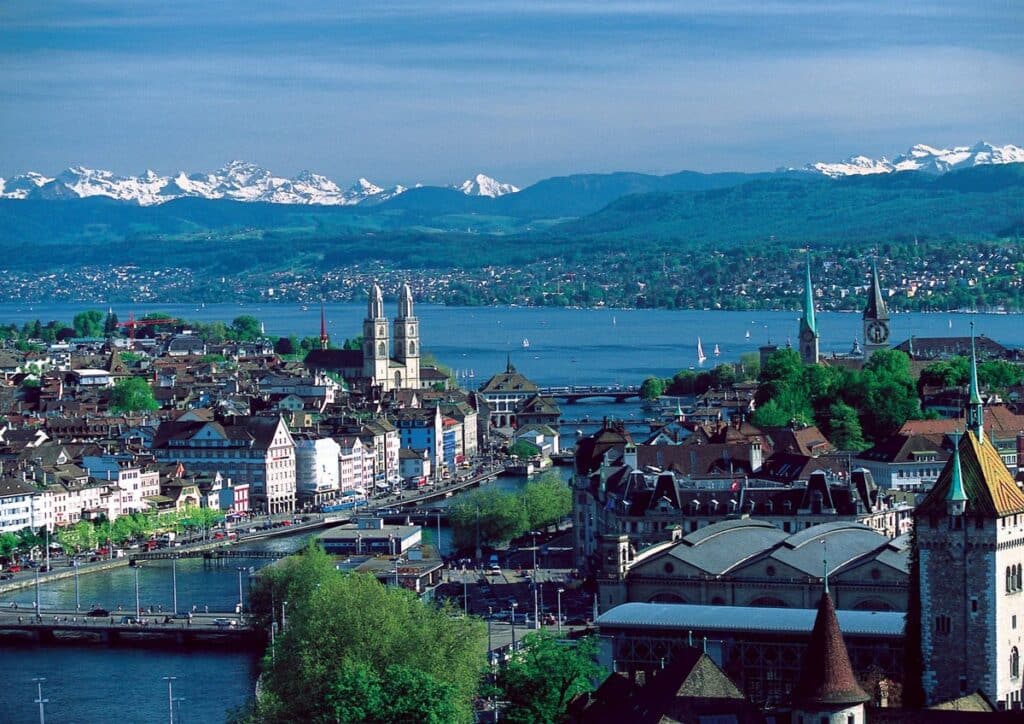
Zurich is the country’s largest city and one of the biggest financial hubs in Europe. The city is situated on the edge of Lake Zurich. While the country has a number of excellent world-class museums and interesting architectural gems, many visitors prefer to head to cities such as Lucerne which offer more attractions for tourists.
If you do decide to visit Zurich, rent a boat and go onto the lake for some incredible views or catch the Polybahn, a 19th-century funicular for panoramic views of the city.
Bern
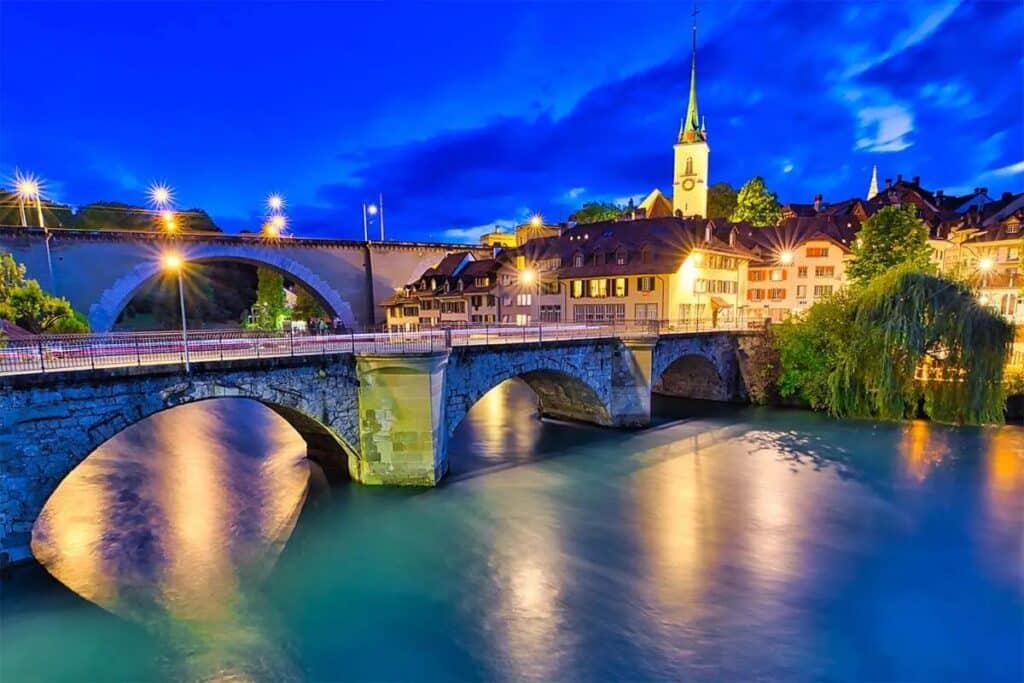
Bern is a postcard-pretty medieval city that’s always a highlight on visitors’ tour itineraries.
The town dates back to the 12th century, although it didn’t officially become part of the Swiss Confederacy until 4 centuries later. People often think mistake Zurich for the capital city, but it’s actually Bern.
The city is known for the beautiful pristine canals in the city as well as bears that are kept in an open-air pit. Bears are then also the symbol of the city.
Jungfrau Region
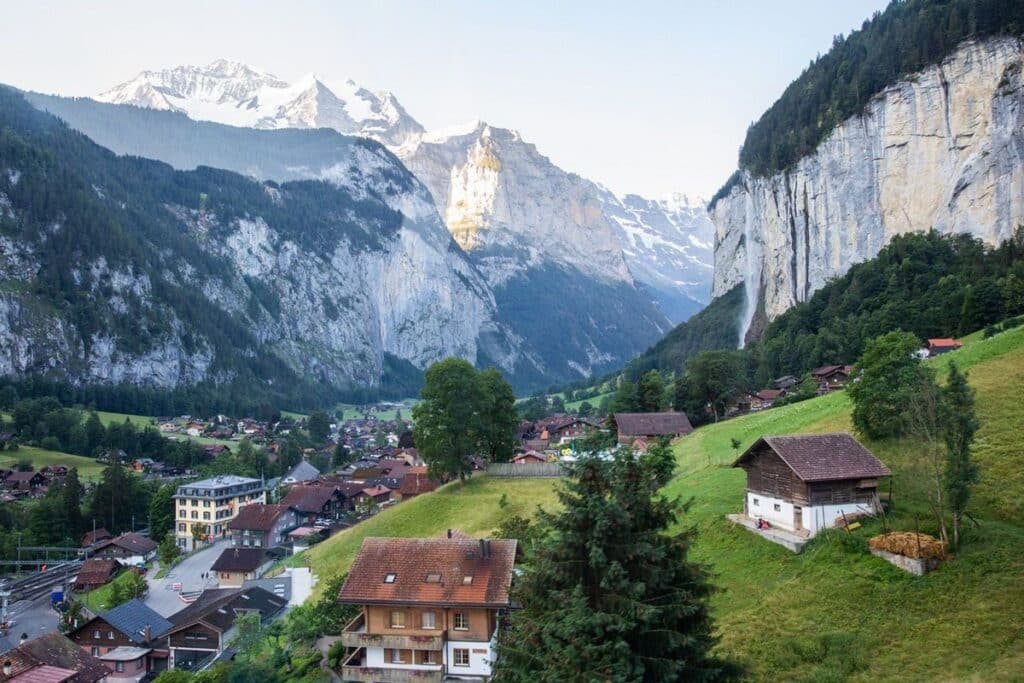
This beautiful region attracts hordes of foreign and local visitors throughout the year. The region consists of four beautiful towns: Murren, Wengen, Lauterbrunnen, and Grindelwald. Thanks to a well-connected railway it’s easy to travel between these towns.
The region is also home to three spectacular mountains: Mönch, Eiger, and Jungfrau. Various well-kept bike- and footpaths make these mountains an ideal hiking destination.
It’s also here where you’ll find one of the country’s most scenic rail trips. The Jungfraubahn takes visitors from Kleine Scheidegg through the Eiger and Mönch mountains up to the Jungfraujoch.
Matterhorn
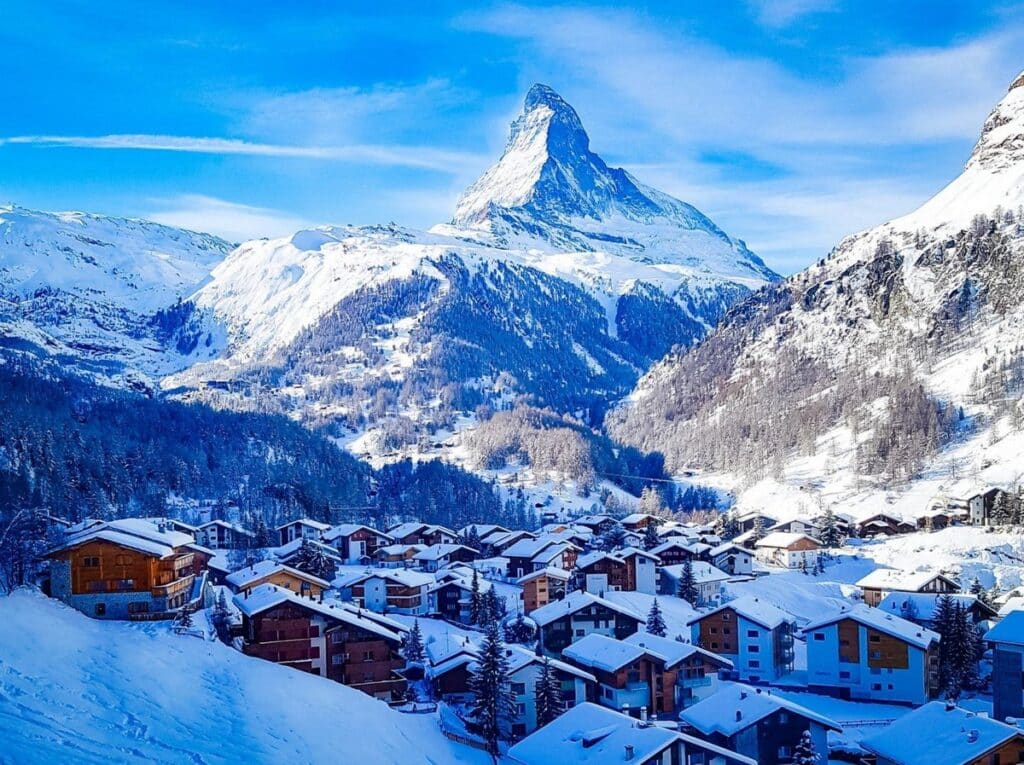
The Matterhorn is the country’s iconic pointed peak and arguably Europe’s most famous mountain. It’s one of the highest mountains in the Alps. The peak owes its fame to its almost perfect pyramid shape. Its peak rises to 4,478 meters (14691 feet) and stands in perfect isolation.
In winter, skiers can enjoy over 300 kilometers (186 miles) of slopes, and in summer, visitors can engage in summer glacier skiing.
Zermatt
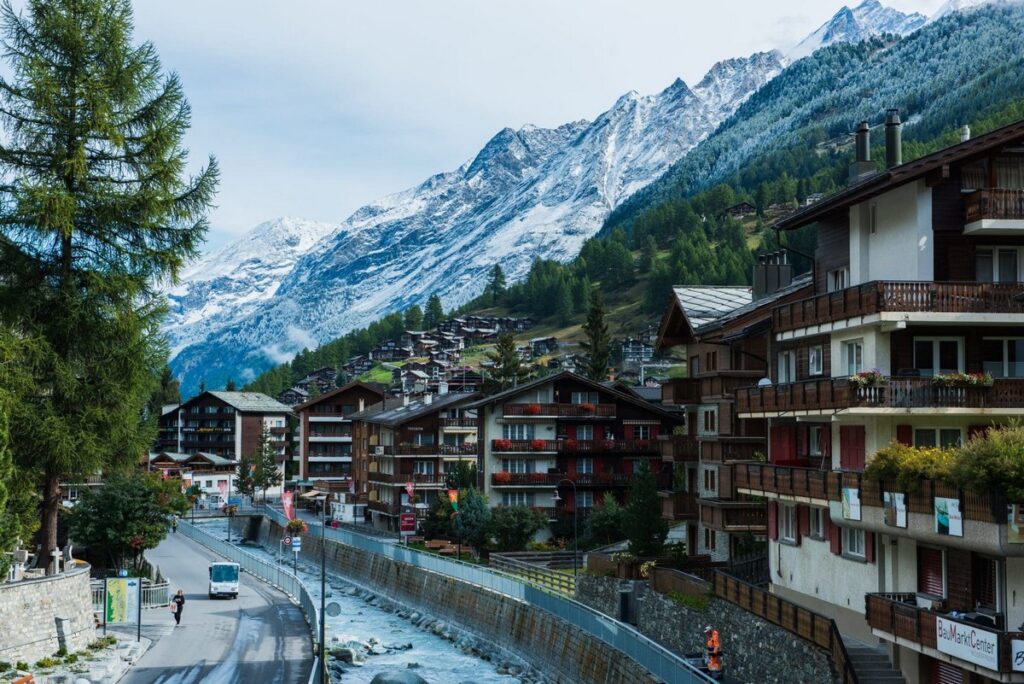
Zermatt is a pretty little town at the foothills of the Alps. It’s so well-known specifically for its close proximity to the Matterhorn.
Cable cars take visitors up to the mountains in winter for skiing and in summer for hiking. Zermatt, therefore, serves as the perfect base for year-round outdoor activities. No gasoline cars are permitted within the city limits, but this doesn’t pose any issues as visitors can easily get by on foot.
The town is also accessible via train, so it’s an easy stop to make on one of Switzerland’s iconic scenic train journeys.
Chateau de Chillon (Chillon Castle)
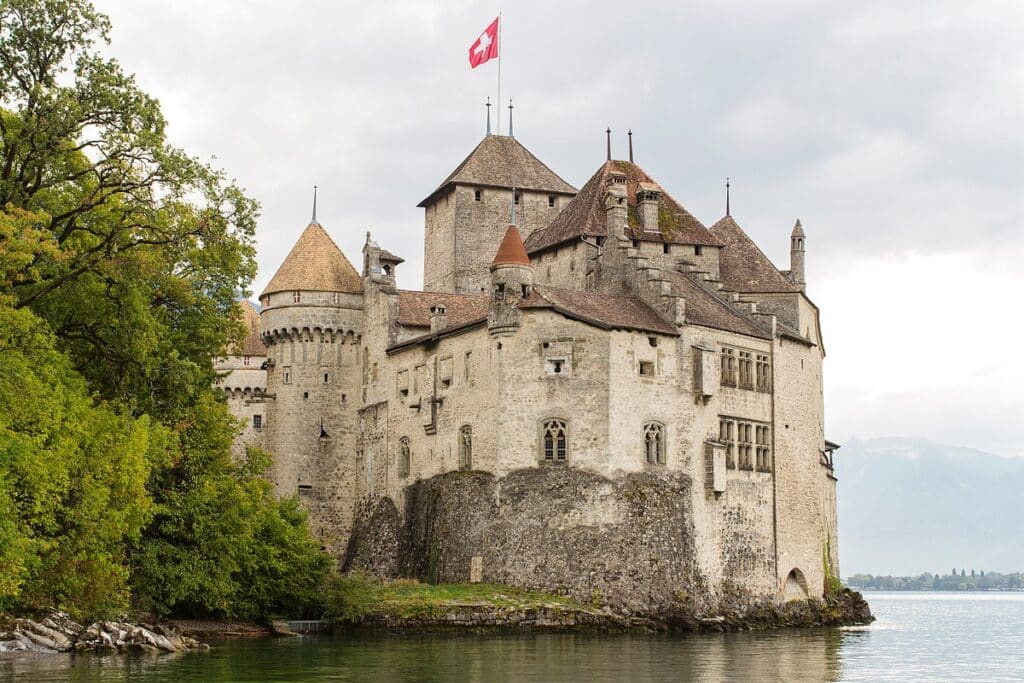
This castle on the shores of Lake Geneva is an impressive collection of 25 buildings centered around 3 courtyards. The castle had its origins in the 12th century when it used to serve as a stronghold for the Counts and Dukes of Savoy.
Highlights include the incredible views of the lake, the Great Halls, the Chapel, and the Gothic underground rooms. Lastly, the Camera Domini, a bedroom that used to belong to the Duke of Savoy, isn’t to be missed.
The Albula/Bernina Railway Line
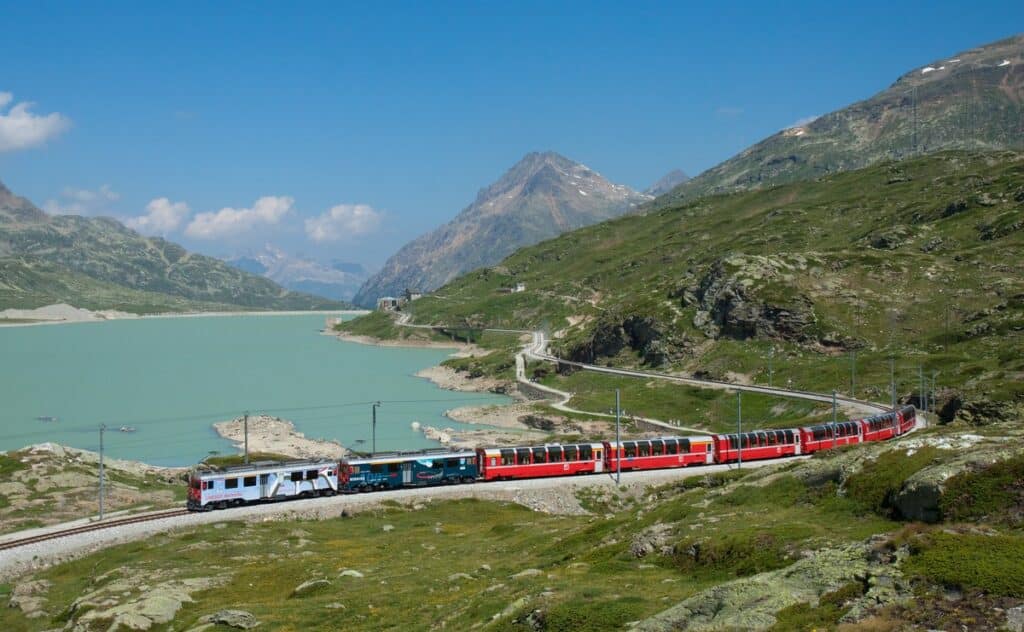
This railway line offers such magical views all year long that it’s been designated as a UNESCO World Cultural Heritage listing. As a passenger, you’ll be treated to unforgettable views of the alpine landscape, including the highest mountain in the Eastern Alps, the Piz Bernina.
The line covers 122 kilometers (76 miles) through the Albula and Bernina landscapes and passes through almost 200 bridges, a number of tunnels, and viaducts. The line also winds through the Graubünden mountains.
Basel
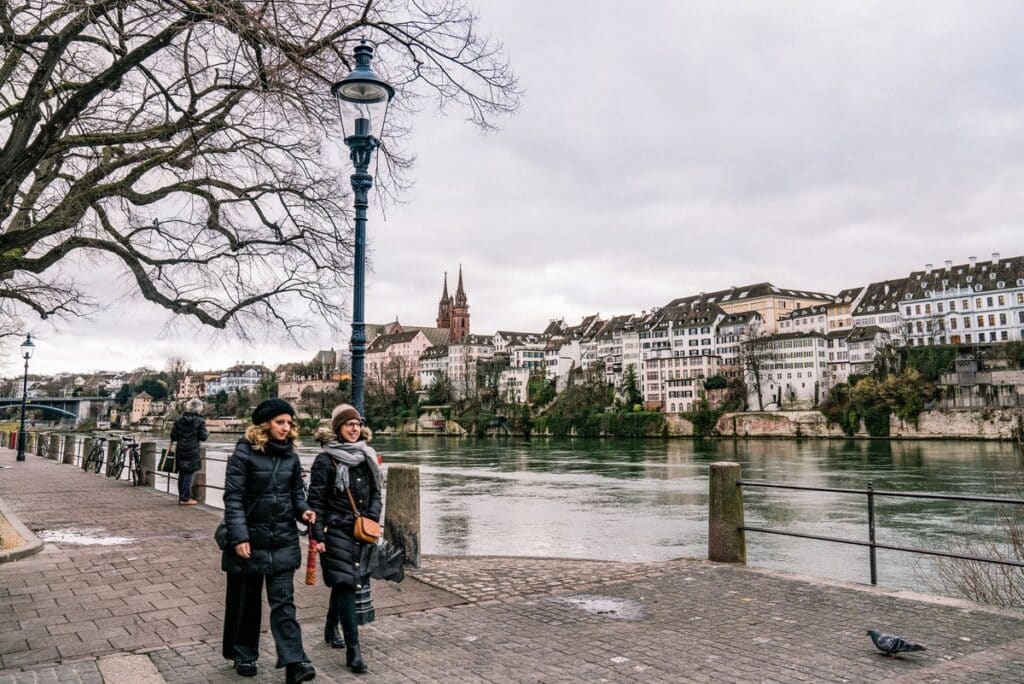
Basel is the country’s second-largest city, and it’s known for its incredible concentration of cultural attractions. The city is home to an abundance of museums that can keep any visitor entertained for days. Moreover, these museums are usually housed in iconic buildings designed by renowned architects.
One of the city’s top attractions is the Kunsmuseum (art museum). It’s widely considered to house the finest collection of paintings in the country. You’ll find an extensive collection of works from some of the best old masters, such as Rembrandt, Dali, Picasso, and Van Gogh, up to modern art.
Palais des Nations
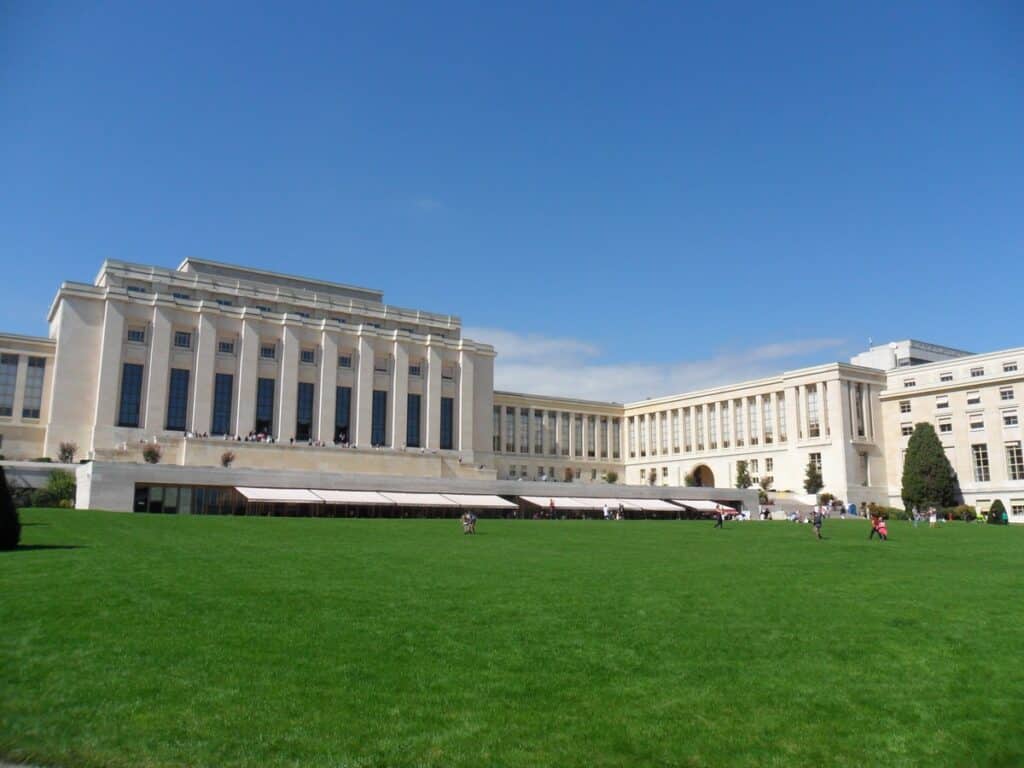
The Palais des Nations is a large complex of imposing marble buildings that make up the European headquarters of the United Nations. After New York, it’s the largest UN center with about 25 000 delegates passing by annually.
Fortunately, the complex isn’t only accessible to UN employees as visitors are able to do a tour of the building. On a guided tour, you’ll get more insights into the type of work that’s done here and get a glimpse of the artwork that countries have donated to the complex.
Chocolate
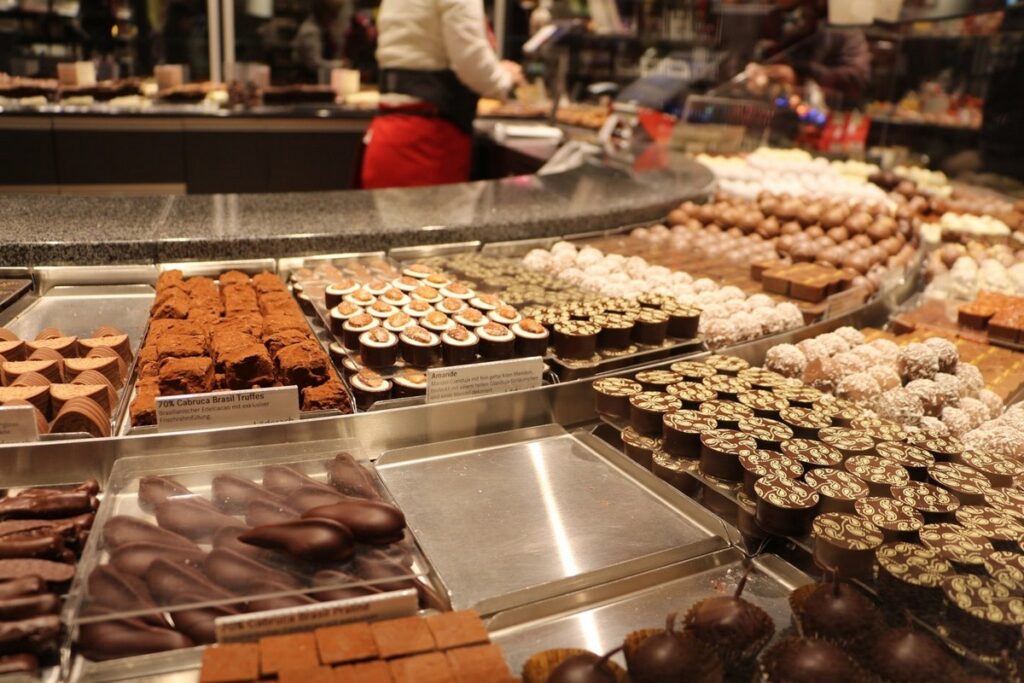
When many people hear Switzerland, they immediately think of delicious, melt-in-your-mouth goodness. Although the country has never produced a single cocoa bean itself, the country is renowned for producing the finest, smoothest chocolate in the world.
Chocolate, as we know it today, wasn’t the invention of a single person. Rather it was a legion of pioneers that built on each other’s knowledge to ultimately produce chocolate in the form we love now.
Before buying your first chocolate in the country, read up a bit about its fascinating history so you’ll enjoy that first bite even more.
Swiss Watches

The Swiss watchmaking industry has dominated the global market for a whopping four centuries. The watch and clock industry first appeared in Geneva in the mid-16th century. This all came about as a result of the reformer Jean Calvin banning the wearing of ornamental objects in 1541.
As a result, jewelers and goldsmiths had to turn to something new, and the art of watchmaking was born. Geneva quickly became known as a center of excellence, and in 1601 the Watchmakers Guild of Geneva was established. At the time this guild was a first of its kind anywhere in the world.
